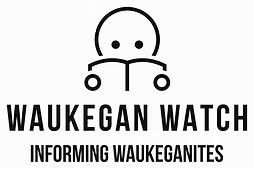In an era where data volumes are exploding, the corporate lexicon is saturated with promises of “transformation.” Yet, for many mid-to-senior level leaders, the gap between possessing vast data lakes and deriving actionable, strategic insight remains frustratingly wide. The challenge is no longer just collecting data; it’s about creating a cohesive, intelligent, and agile system that can transform raw information into a competitive advantage. This is where the emergent framework of Transds becomes critical. While the term is new and still evolving, understanding and applying its principles is no longer a forward-thinking exercise—it’s a necessity for future-proofing your organization’s digital core.
This guide will demystify Transds, moving beyond jargon to provide a clear definition, explore its practical applications across industries, and outline a strategic roadmap for leveraging it to drive efficiency, innovation, and sustainable growth in your organization.
Decoding Transds: Multiple Meanings and Core Components
At its heart, Transds is not a single piece of software or a proprietary platform. Instead, it is a conceptual framework—a holistic approach to designing, managing, and applying data solutions that are inherently transformative. The term itself is a portmanteau with flexible interpretations, which speaks to its versatile nature.
The primary interpretations of Transds are:
- Transformative c/Systems: This is the most strategic interpretation. It refers to integrated data architectures designed not merely to process information, but to fundamentally change how an organization operates, makes decisions, and delivers value. The focus is on the outcome—the business transformation enabled by data.
- Transactional Data Systems: This is a more technical, but equally vital, interpretation. It points to the underlying systems that manage and process business transactions (e.g., sales, logins, bookings) in real-time, ensuring data integrity, consistency, and availability.
- Transdisciplinary Research: In academic and complex problem-solving contexts, Transds can represent a methodology that integrates knowledge, tools, and perspectives from across different disciplines (e.g., combining climate science, economics, and sociology) to tackle large-scale challenges, often using shared data frameworks.
For business leaders and IT professionals, the most powerful approach is to view Transds as the unification of the first two: a Transformative Data Solution built upon a robust, real-time Transactional Data System.
The Anatomy of a Transds Data System
To understand its power, let’s break down the components of a true Transds framework.
- “Trans”: This prefix signifies Transformation, Transition, or Movement. In a business context, this translates to the movement of data from its raw state to a position of value. It’s about transitioning an organization from a reactive, siloed data culture to a proactive, integrated one.
- “DS”: This is shorthand for Data Systems, Digital Structures, or Decision Support. It encompasses the entire technological stack, from data lakes and pipelines to analytics platforms and AI models.
A cohesive Transds framework operates on a core pipeline:
- Ingestion: Seamlessly pulling data from diverse sources—cloud applications, IoT sensors, legacy databases, and third-party feeds.
- Transformation: The “transformative” heart of the system. This involves cleaning, reformatting, enriching, and structuring data to ensure it is accurate, consistent, and ready for use.
- Governance: Embedding policies for security, privacy, compliance, and lineage directly into the data flow. This ensures trust and accountability.
- Activation: Delivering the right data, at the right time, to the right endpoint—whether that’s a business intelligence dashboard, an AI model, or an automated operational system.
Transds vs. Traditional Data Processing
Many organizations are still reliant on traditional data processing models, making the shift to a Transds approach a significant evolution. The key differences are profound.
| Feature | Traditional ETL/Batch Processing | Transds Framework |
|---|---|---|
| Processing Speed | Batch-oriented; scheduled runs (e.g., nightly). | Real-time or near-real-time streaming. |
| Data Integration | Often siloed; difficult to integrate across platforms. | Built for interoperability across cloud, on-premise, and edge environments. |
| Flexibility | Rigid schemas; difficult to adapt to new data sources. | Highly adaptable and scalable to evolving business needs. |
| Primary Goal | Moving and storing data for historical reporting. | Activating data for immediate insight, automation, and decision-making. |
The shift is from a “data warehouse” mentality to a “data-driven action” mentality.
The Strategic Impact: Transds Applications in Industry and Knowledge Work
The theoretical strength of Transds is best proven by its practical, cross-industry applications. So, which industries are benefiting most from adopting Transds? The answer is nearly all of them, but the impact is particularly pronounced in sectors defined by complexity, speed, and vast data flows.
Enabling Digital Transformation and Business Automation
At its core, digital transformation is about using technology to fundamentally improve performance. Transds is the engine that makes this possible.
- Supply Chain & Logistics: A Transds framework can integrate real-time data from GPS, IoT sensors, warehouse management systems, and weather APIs. This allows for dynamic route optimization, predictive inventory management, and automated exception handling, dramatically reducing delays and costs.
- Finance & E-commerce: In fraud detection, milliseconds matter. A Transds system can analyze transactional data in real-time, cross-referencing it with behavioral patterns and blacklists to flag and block fraudulent activity before it is completed, protecting revenue and customer trust.
- Customer Relationship Management (CRM): By unifying customer interaction data from marketing, sales, and support channels, a Transds approach provides a 360-degree view of the customer. This enables hyper-personalized marketing, proactive support, and streamlined sales processes.
Transds in AI, ML, and Data Governance
The promise of Artificial Intelligence and Machine Learning is entirely dependent on the quality of the data fed into them. Garbage in, garbage out. Transds is the essential prerequisite for effective AI.
- Fueling AI/ML Models: AI models require massive volumes of clean, consistent, and well-structured data. The transformation and governance layers of a Transds framework are responsible for converting unstructured data (like text, images, and video) into usable formats, ensuring that models are trained on reliable information.
- Embedding Data Governance: A modern Transds system bakes governance into its core. It automatically tags data with lineage (tracking its origin and journey), enforces access controls, and masks sensitive information, ensuring compliance with regulations like GDPR or CCPA without crippling data agility. This turns data governance from a bureaucratic hurdle into a strategic enabler.
The Role of Transds in Sustainable Practices
Sustainability is no longer a peripheral CSR activity; it’s a core business imperative. Transds provides the data backbone to make sustainability measurable, manageable, and integrable into operations.
- Real-Time Resource Monitoring: Manufacturing and energy companies can use Transds to collect transactional data from sensors on equipment, power grids, and water lines. This allows for real-time monitoring of resource consumption, identification of inefficiencies, and reduction of environmental footprint.
- Enhancing Transparency: For companies making ESG (Environmental, Social, and Governance) claims, a Transds framework ensures data integrity and traceability across the entire supply chain. This provides verifiable proof for stakeholders and protects against accusations of “greenwashing.”
- Transdisciplinary Research: As mentioned earlier, solving complex challenges like climate change requires merging datasets from ecology, economics, and social sciences. A Transds approach provides the interoperability and data handling capabilities to make this collaborative research possible at scale.
Navigating the Future: Challenges and Potential of Transds
Adopting a Transds framework is a strategic journey with clear rewards, but it is not without its hurdles. Understanding the benefits and challenges for businesses is key to a successful implementation.
Common Challenges in Transds Implementation
- Integration with Legacy Systems: Many enterprises run on decades-old systems that were not designed for real-time, interoperable data exchange. Bridging this gap often requires significant investment in custom APIs, middleware, or phased modernization.
- High Learning Curve and Skill Gaps: The shift to a Transds mindset requires new skills in data engineering, stream processing, and cloud architecture. Upskilling existing teams or hiring specialized expertise is both costly and time-consuming.
- Data Governance Complexity: Establishing consistent, enterprise-wide data governance rules that work across diverse and distributed systems is a monumental challenge that involves technical, cultural, and legal considerations.
The Future Potential of Transds Technology
Despite these challenges, the trajectory of Transds is one of immense growth and integration. The future potential of Transds technology lies in its convergence with other cutting-edge fields.
- Integration with Edge Computing: As IoT devices proliferate, processing data at the “edge” (closer to where it’s generated) becomes critical. Transds frameworks will evolve to manage data flows seamlessly between edge devices, the cloud, and core data centers, enabling faster responses in applications like autonomous vehicles and smart cities.
- Leveraging Blockchain for Trust: Integrating blockchain technology with Transds can create immutable, transparent, and auditable data records. This is particularly powerful for supply chain provenance, secure financial transactions, and verifiable ESG reporting.
- The Rise of Semantic AI: The next evolution will be Transds systems powered by Semantic AI, which understands the meaning and context of data. Instead of just moving and formatting data, these systems will be able to reason over it, uncovering deeper insights and automating more complex decision-making processes.
Conclusion
Transds is far more than a new piece of tech jargon. It is the essential, evolving framework that unifies the concepts of transformation and data systems to deliver real-time insight, automate complex processes, and support strategic, data-driven growth. It represents a shift from viewing data as a static asset to be stored, to treating it as a dynamic flow to be activated.
For leaders and professionals, the message is clear: the journey toward a mature Transds framework is the practical roadmap for achieving genuine digital transformation. It is the foundation upon which AI, sustainability, and business automation are built.
Your call to action is to begin this audit today. Evaluate your current data systems against the principles of a Transds framework. How seamless is your data interoperability? How robust is your real-time processing? How deeply embedded is your data governance? Prioritize training for your teams, and consider launching a pilot project in a key area like supply chain automation or customer analytics. The transformation of your data systems is the transformation of your business—and that transformation starts now.
READ ALSO: Solving the SSIS 469 Error: Your Quick Fix Guide

